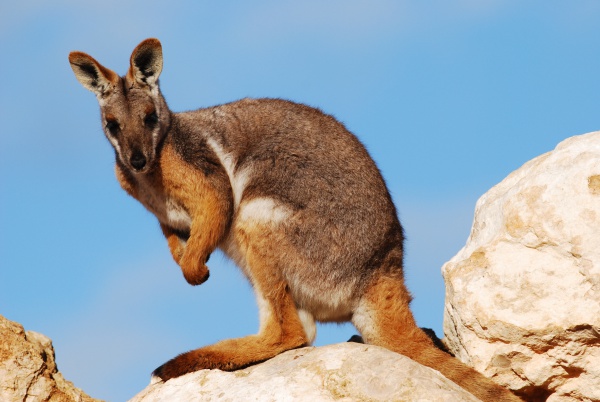Facts About Yellow-footed rock-wallaby
The yellow-footed rock-wallaby, also known as the ring-tailed rock-wallaby, is a captivating member of the macropod family. Recognizable by their distinctive grey to fawn-grey fur, prominent white cheek stripe, and striking bright yellow to orange forearms and hind legs, these wallabies primarily inhabit rugged terrains and rocky outcrops, far from human settlements. They are found in areas such as western New South Wales, eastern South Australia, and parts of Queensland.
There are two subspecies of the yellow-footed rock-wallaby: P. x. xanthopus and P. x. celeris. Both subspecies are listed as vulnerable under the Australian Environment Protection and Biodiversity Conservation Act 1999. P. x. xanthopus resides in South Australia and New South Wales and faces threats such as competition from introduced herbivores, predation by foxes and feral cats, and habitat destruction. Similarly, P. x. celeris, found in central-western Queensland, is endangered due to predation, competition with domestic livestock, climate change, and habitat loss.
To protect these unique wallabies, various conservation efforts have been implemented, including fox baiting, controlling feral animal populations, and preserving their habitats. Sanctuaries and reserves have been instrumental in these efforts, with successful recovery programs in places like Mutawintji National Park. The strategies employed to save the yellow-footed rock-wallaby have become a model for conserving other endangered rock-wallaby species, highlighting the critical nature of ongoing conservation work.
